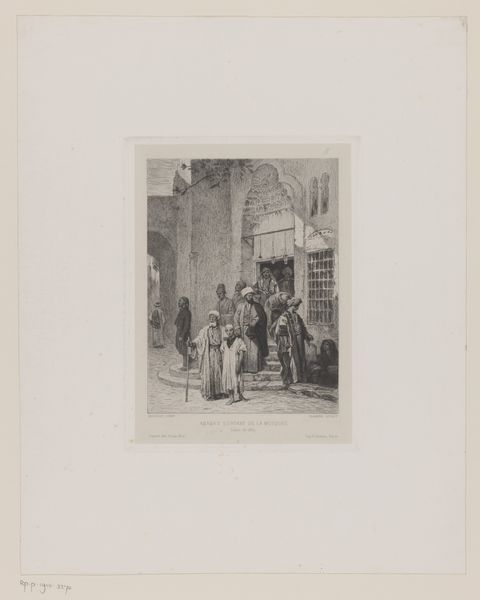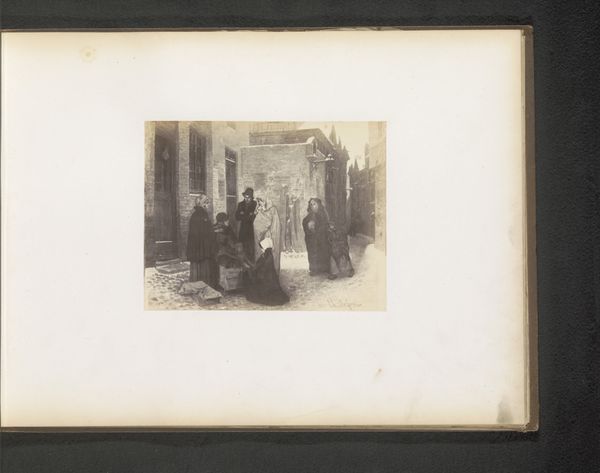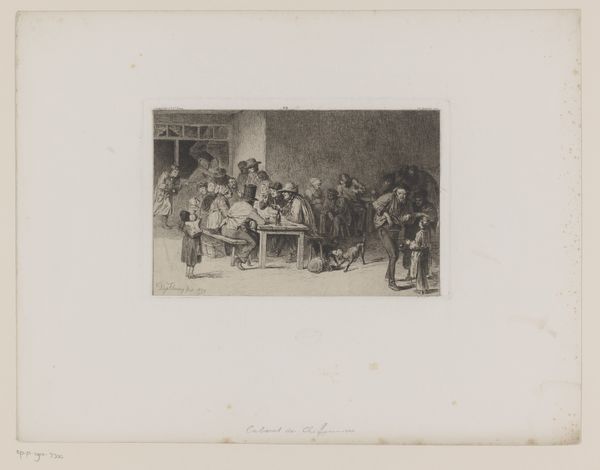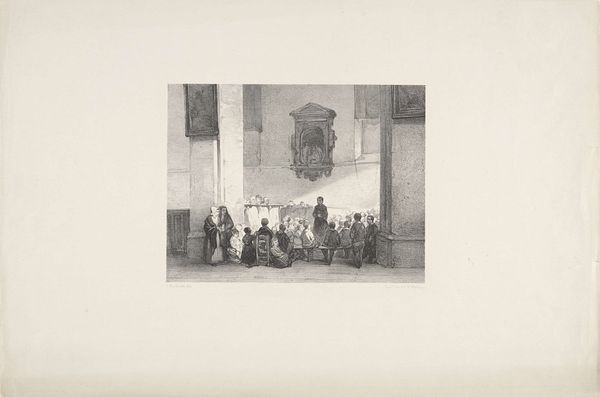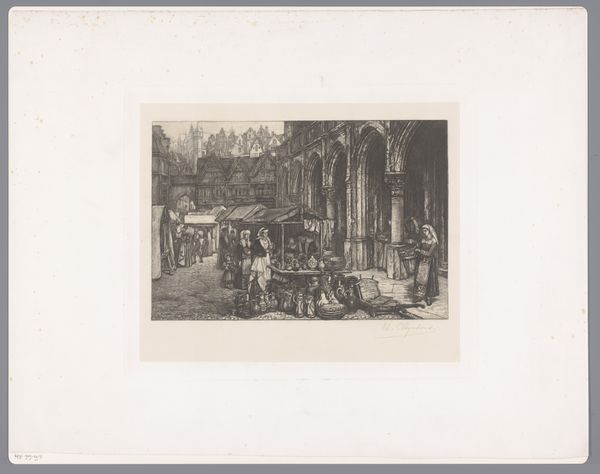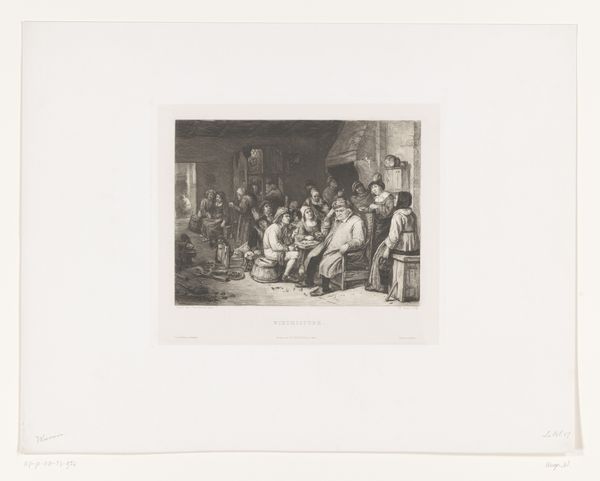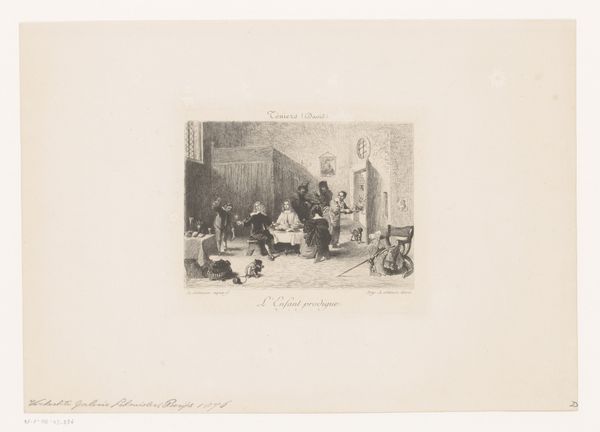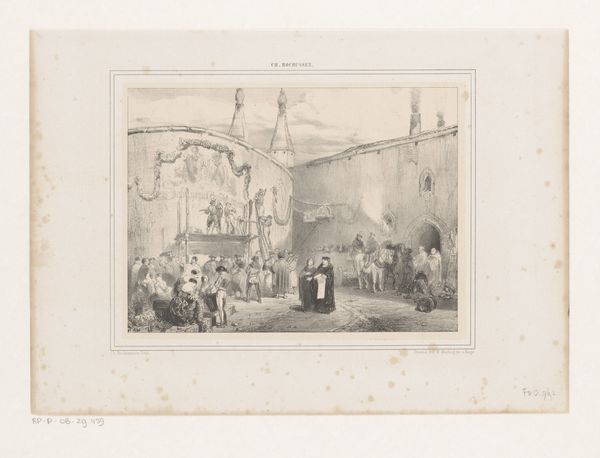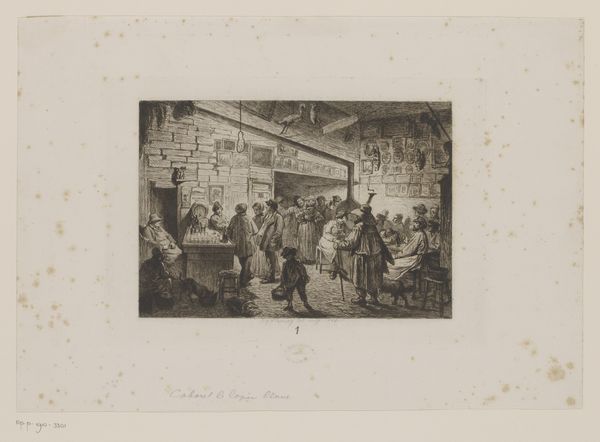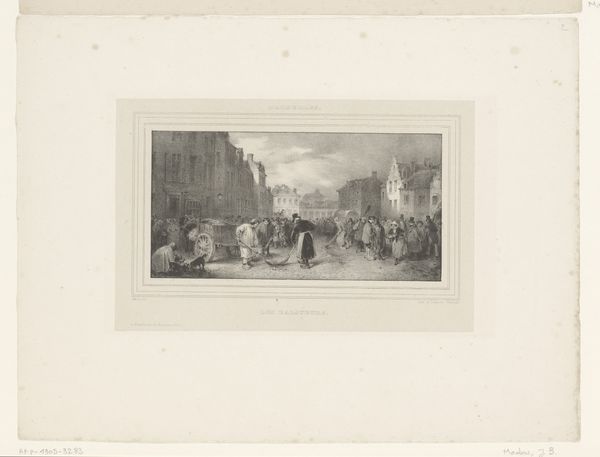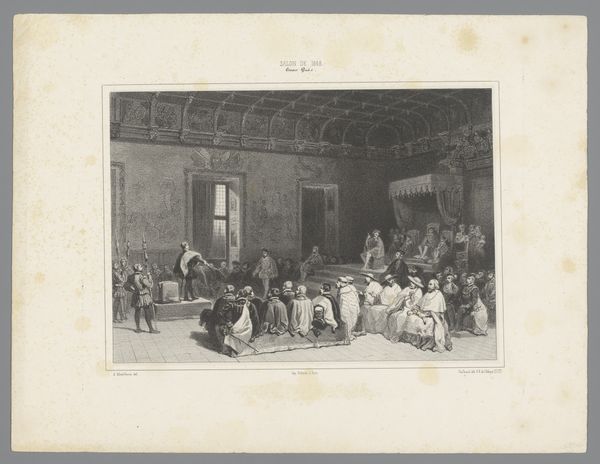
Twee jonge kinderen bekijken een groep Kleine Zusters van de Armen na een begrafenis 1859 - 1860
0:00
0:00
print, etching
#
medieval
#
narrative-art
# print
#
etching
#
genre-painting
#
history-painting
#
realism
Dimensions: height 167 mm, width 226 mm
Copyright: Rijks Museum: Open Domain
Curator: This is Léopold Flameng's "Twee jonge kinderen bekijken een groep Kleine Zusters van de Armen na een begrafenis," created between 1859 and 1860. It’s an etching, a print, so multiples would have been produced and distributed. Editor: It feels so somber, so filled with a gray stillness. The stark contrasts between light and shadow certainly amplify that melancholic mood, don't you think? Curator: Absolutely. But beyond the aesthetic, let’s consider the means of production here. Flameng was making art accessible, reproducible. Prints democratized imagery and narrative. Look at the depiction of the Little Sisters of the Poor. They were a real order, serving the impoverished. Editor: Yes, but the formal construction is crucial. The receding planes, defined by precise lines, create depth, drawing our eye to that cluster of figures. It's carefully structured. Notice the figures become increasingly blurry as you look into the building, with heavy outlines. Curator: True. The use of etching allowed him to capture minute details, but also suggest textures – the fabric of the nuns' habits, the rough stonework. These details speak volumes about the social realities of the time and materials at the hands of workers in a capitalist system. Editor: But that precision serves to elevate the scene beyond mere reportage. It almost romanticizes their plight, creating a sentimental tableau. This scene’s compositional order – the balanced asymmetry, the subtle use of light – imbues a sense of dignity and grace. Curator: Well, is that not what realism strove to do? To make visible certain truths, sometimes even prettifying certain realities to call for reform? This wasn’t an entirely neutral record. Flameng’s piece implicates the viewer, prompting a consideration of poverty, the roles of religious orders, and even our own place in that social fabric and history of production. Editor: An engaging and multi-layered artwork—technically impressive but rich with contextual and cultural resonance as well. Curator: Precisely. It prompts questions of artistic reproduction in a growing capitalist society and the conditions of production required in such an act.
Comments
No comments
Be the first to comment and join the conversation on the ultimate creative platform.
